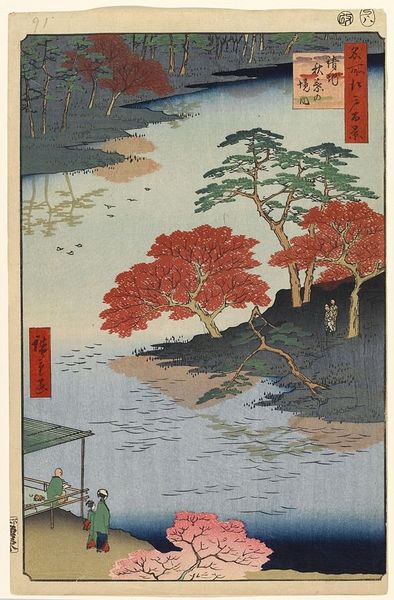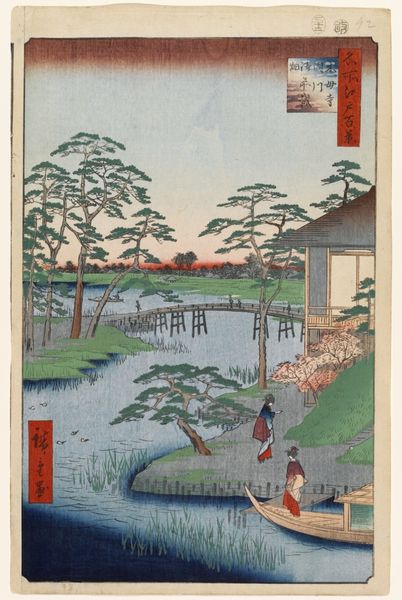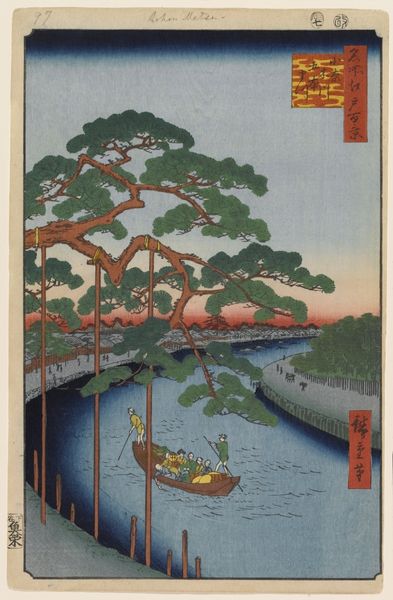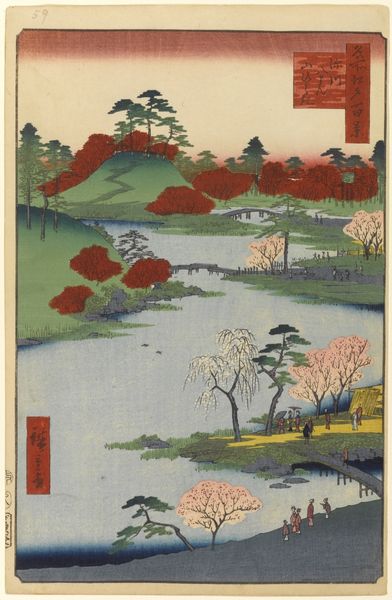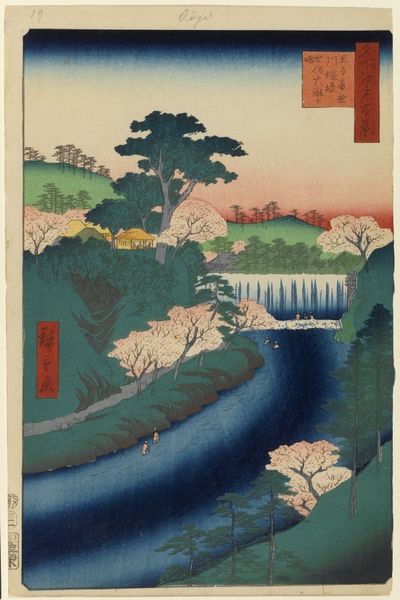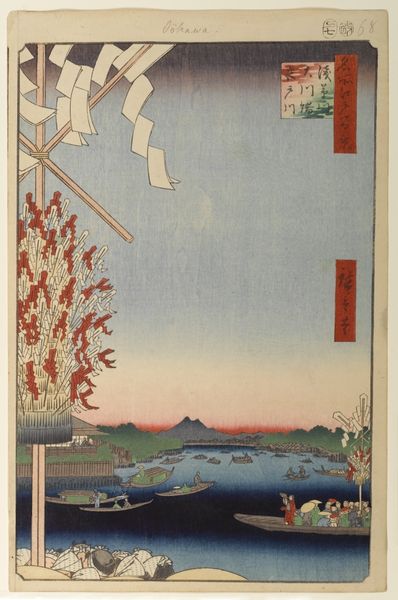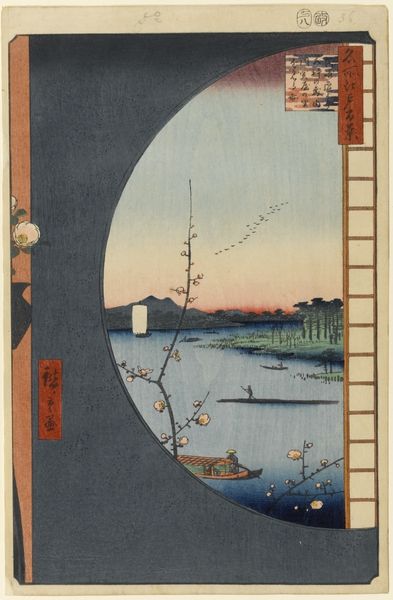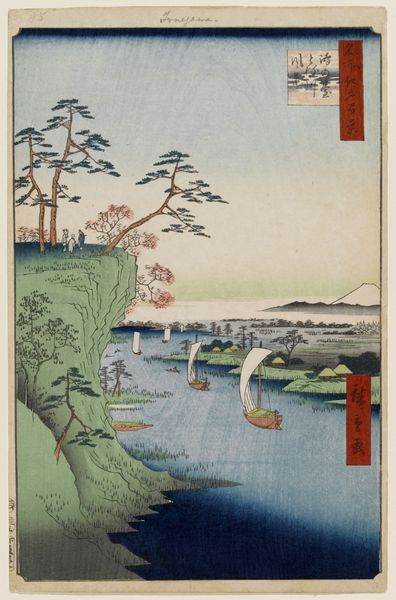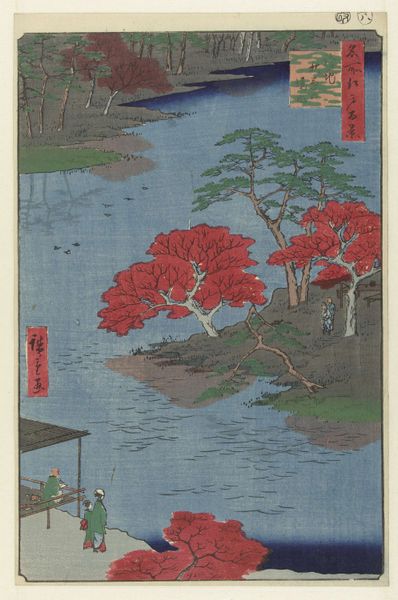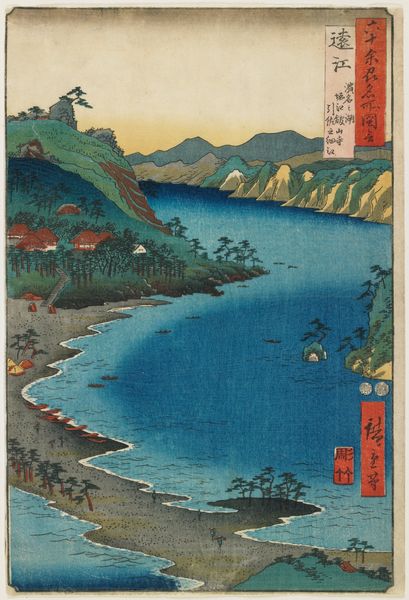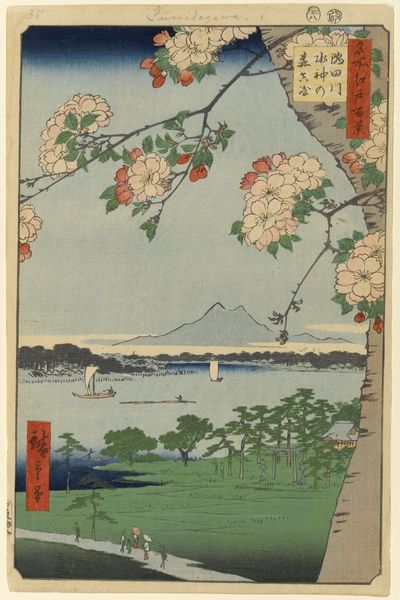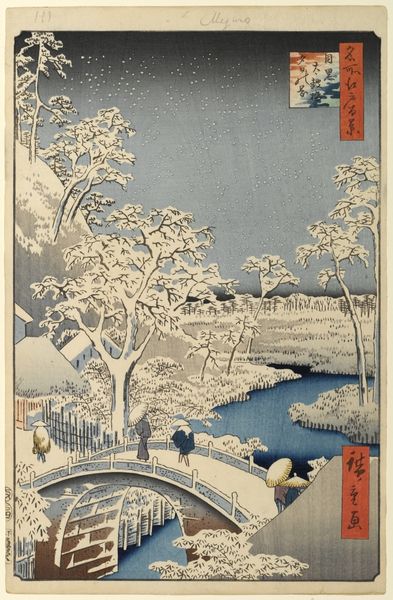
print, watercolor, woodblock-print
#
tree
#
water colours
# print
#
asian-art
#
landscape
#
ukiyo-e
#
watercolor
#
woodblock-print
#
cityscape
#
watercolour illustration
Copyright: Public domain
Editor: Here we have "65 (57) Inside Kameido Tenjin Shrine," a woodblock print by Utagawa Hiroshige, created in 1857. It's so serene; the composition feels carefully arranged, almost like a stage. What stands out to you in this piece? Curator: I see a powerful statement about the relationship between humans and nature within a specific socio-political context. This print is from the Edo period, a time of relative peace but also strict social hierarchies. The bridge isn't just a bridge; it's a symbol of connection, but also a carefully controlled passage. How do you interpret the wisteria? Editor: It seems like it's framing the scene, drawing my eye to the bridge. Curator: Precisely! Wisteria, with its cascading beauty, was a popular motif, often representing resilience and longevity. But consider also who had access to these spaces of leisure and beauty. Were these shrines accessible to all, or were they subtly reinforcing class distinctions? Editor: That's a perspective I hadn't considered. I was just enjoying the aesthetics. Curator: And that’s perfectly valid! However, art doesn't exist in a vacuum. Hiroshige's landscapes weren't simply picturesque; they were carefully constructed views that speak to the political and social realities of his time. What effect do you think the single bird has, placed to the right of the bridge, between the signage? Editor: I guess, adding some sense of motion. But with all you said, now I imagine it suggesting escape from social boundaries? Curator: Perhaps. It's about layering these readings, acknowledging the beauty while interrogating the underlying power dynamics. Editor: I see! This changes how I approach art, from purely aesthetic to engaging with broader social narratives. Curator: Exactly! And by engaging with the past in this way, we can gain critical insight into our own present. Editor: This was incredibly helpful; thank you! Curator: My pleasure. Remember to question everything!
Comments
No comments
Be the first to comment and join the conversation on the ultimate creative platform.

